The Story of our Arapawas
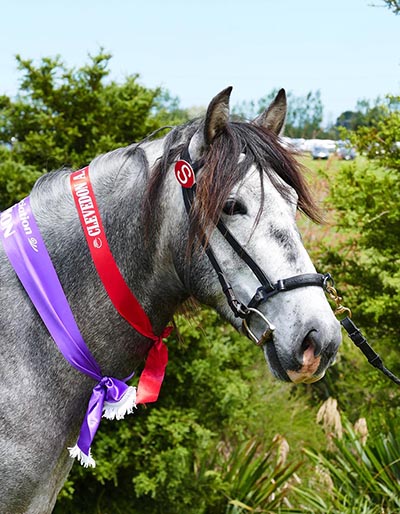
Our venture into Arapawa sheep came about after deciding we needed something to help keep the paddocks clean and tidy. We had been breeding our beloved Spanish horses for some time and the property was looking a bit sad and untidy as a result of only being grazed by one species.
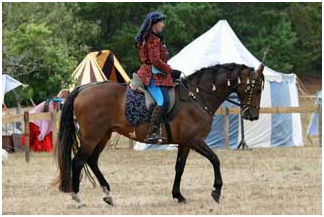
So we decided we needed to have something else to rotationally graze along with the horses, we had raised and fattened beef cattle a number of years ago and decided that they were a bit of a pain to have on the property as they wrecked fences and were hard on the paddocks. I'd bred Angora goats for a number of years and while we loved goats they were a lot of work to manage and they had awful feet problems.
We ran more cattle for a few years but never had a lot of success, the prices were high when we bought the weaners and then the market always dropped by the time they were ready to sell so we continually lost money on them. And they wrecked the fences and paddocks.
A new solution was needed. We purchased a small flock of Romneys for fattening and a small flock of Boer goats - this was a big mistake. The Romneys were all mad and difficult to handle, plus there was no market for the meat or the fleeces so they eventually went to the works. We bred the Boers for a few years, they were nice big goats for meat but still had the goat problem - they were supreme escape artists and spent most of their time devising ways to annoy the neighbours by appearing randomly in their paddocks, and they still had awful feet problems! So we ended up with lots of irate phone calls from the local dairy farmer accusing the goats of eating all his grass - where the goats were actually eating the WEEDS in his paddocks and cleaning them up for him instead, but there is no telling the facts to some people especially if they won't listen.
The Boer does and kids all got sold and we kept a tiny flock of Boer rejects plus our lovely buck Loki.
I started looking for another breed of sheep to cross-graze with the horses. A friend of mine was starting to breed Arapawas and had a flock which had come virtually straight off the Island, so I thought maybe these would make a better change for the property as they were low maintenance and they looked interesting and unusual.
We started with a handful of Arapawa sheep and were soon entranced with the breed as they have the intelligence of the goats without the goatiness - we have had NO escape artists in our Arapawa flock! One day while doing normal sheep and goat maintenance (drenching, vaccinating and hoofcare) in the yards I suddenly realised that 20 Boer goats took twice as long to process through the yards as 60+ Arapawa sheep, and after receiving a call from another goat breeder looking for Boer goats to breed with, we decided to sell all the remaining goats and just concentrate on the Arapawa sheep, and we haven't looked back ever since!
Interesting information we have learnt about Arapawa sheep - a number of years ago some DNA sampling showed that they are most closely related to Gulf Coast Sheep in USA, which came from sheep brought over by the Conquistadors! There is a local "legend" in the Marlborough Sounds that the Arapawas most likely came from a galleon which was wrecked in the area, so we tend to think the breed originated in Spain or Portugal. In my travels around Spain riding and working with many Spanish horses, many of the local sheep breeds look a lot like our Arapawas.
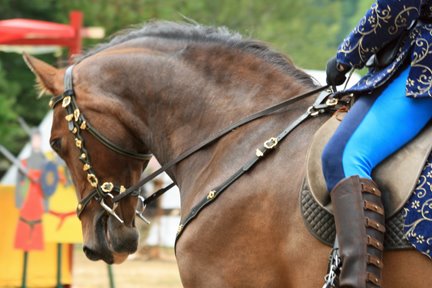
One of my activities for a number of years involved public displays of Medieval Jousting and Skill at Arms on my horses, see my Baroque Spanish Horse website and for this I had to make my own display costumes, including designing and drafting the patterns for them.
Materials for authentic looking Medieval costuming were not readily available in New Zealand in 2015 so I decided to make my own wool fabric using Arapawa fibre and learning to spin and weave as well! This took some time and wasn't the easiest of paths to follow, however it has been immensely rewarding learning to follow all the old techniques and learn a lot of new techniques as well!
I bought and sold a number of looms and spinning wheels which I had used during this process, some of them didn't suit what I was doing or were just too hard to work with and this sort of interest should be something you look forward to doing rather than feeling obliged to perform, and in all things I believe that you always need to have the right tools for the job.
The rest as they say is history, and I now own 2 huge 30yo Mecchia 8 shaft countermarch floor looms, their names are Arabella and Tigerlily. Arabella is the oldest and was in quite good condition, Tigerlily had been stored in bits in a farm shed for a few years and was badly water damaged, resulting in all the "tiger" stripes on her frame. I also own 3 Majacraft wheels - 2 Auras and a Little Gem - plus a number of other spinning wheels and a lot of Majacraft fibre processing equipment.
In the past couple of years I have restored four 30+ year old floor looms to working condition and the two latest Mecchia looms are my pride and joy, they are simply wonderful to weave on and I'm learning many more advanced techniques since getting them, like the fine Merino Deflected Double Weave scarf shown on Arabella in the centre photo. It's like going from a tractor to a Ferrari!
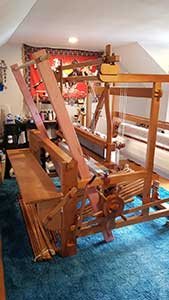

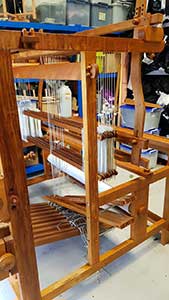
In 2020 I became a dealer for Majacraft Spinning wheels and fibre preparation products - more about the wonderful Majacraft products can be found here. I recommend that all keen spinners should try these excellent wheels!
